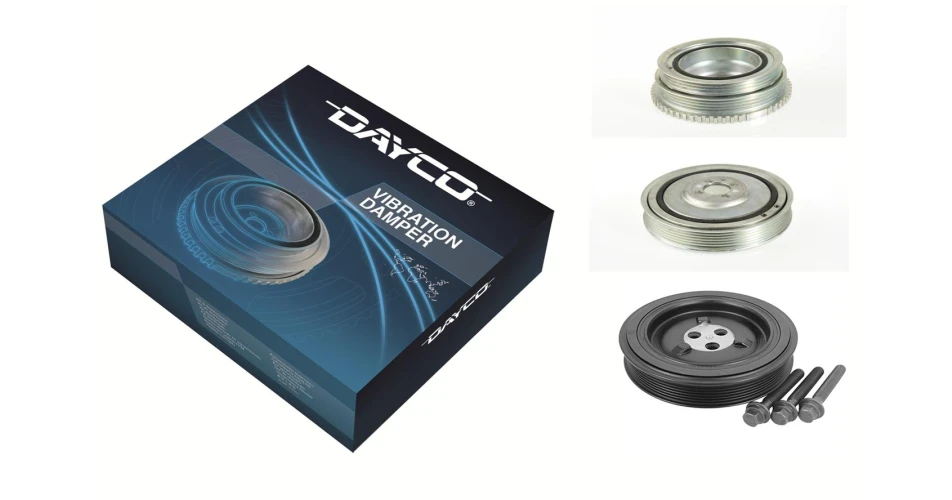Dayco has launched a new range of aftermarket dampers featuring products that it produces as original equipment for leading vehicle manufacturers.
Modern engines create significant vibration which is transmitted through the crankshaft and therefore has a significant impact on the engine’s power transmission drive systems. To reduce this problem, Dayco engineers have developed a range of damper pulleys, with the prefix DPV. Generally installed directly to the crankshaft, the damper reduces the circular vibrations that cause the primary problem, decreasing wear on many of the engine’s components. The front end auxiliary drive (FEAD) system is a principal beneficiary, which increases the durability of the entire powerplant, but they also improve comfort for the vehicle’s occupants.
There are three types of damper that, depending on the application, are generally installed:
The simple damper is integrated within the FEAD system, its single rubber element provides sufficient vibration reduction for applications with standard NVH (noise, vibration and harshness) requirements.
The double damper encompasses two rubber elements within its metal parts, which are designed to absorb vibration at different frequencies, and is for use in applications that generate high power and increased vibration, such as modern diesel engines.
Although the decoupler damper still incorporates a rubber ring, the damping function is carried out through metal springs, as opposed to solely relying on its rubber element. It is used on the latest generation engines with greater power and enables the FEAD system to cope with high mileage and adverse conditions, particularly for applications that feature a BSG (belt start generator) function for their start/stop systems.
Dayco recommend dampers should be checked for signs of wear, such as abnormal noises, unpleasant vibrations, at every 40,000 mile interval or when replacing the auxiliary belt. However, as a matter of course and irrespective of the signs, Dayco suggests they are changed every time the timing belt is renewed. Technicians should be aware that in order to check the damper correctly, it needs to be removed from the engine because the back, as well as the front needs to be examined to fully assess its condition. In addition, whether it needs to be replaced or not, if its fixing bolts are designed to stretch on initial fitment, these must be changed, as they will no longer meet their design tolerances if reused.
Dayco’s DPVs are produced in the same facilities as the OE dampers to provide complete peace-of-mind. For convenience each damper in the 160 plus-strong Dayco range that technically also requires its bolts to be replaced, comes complete with the correct specification bolts.
